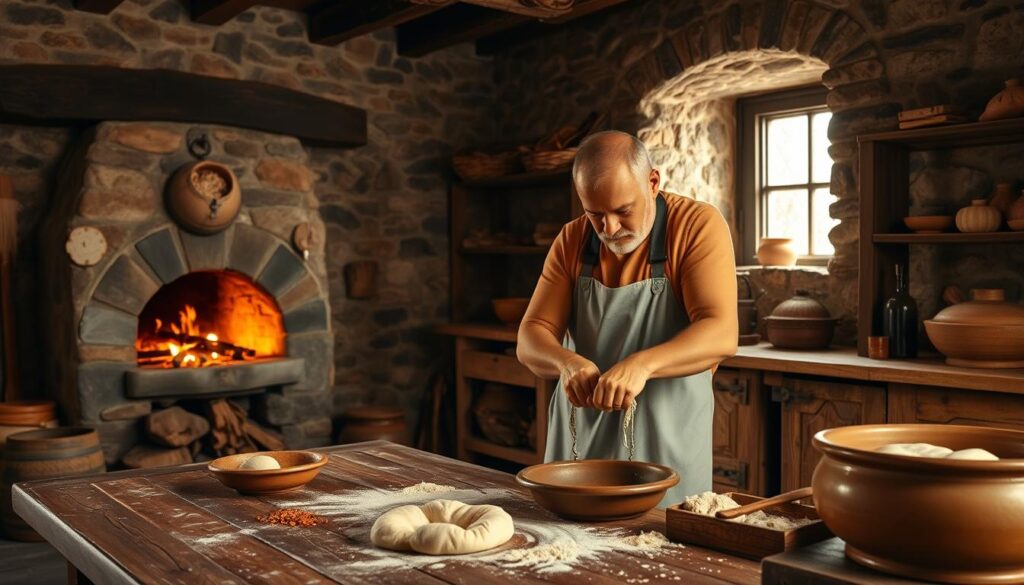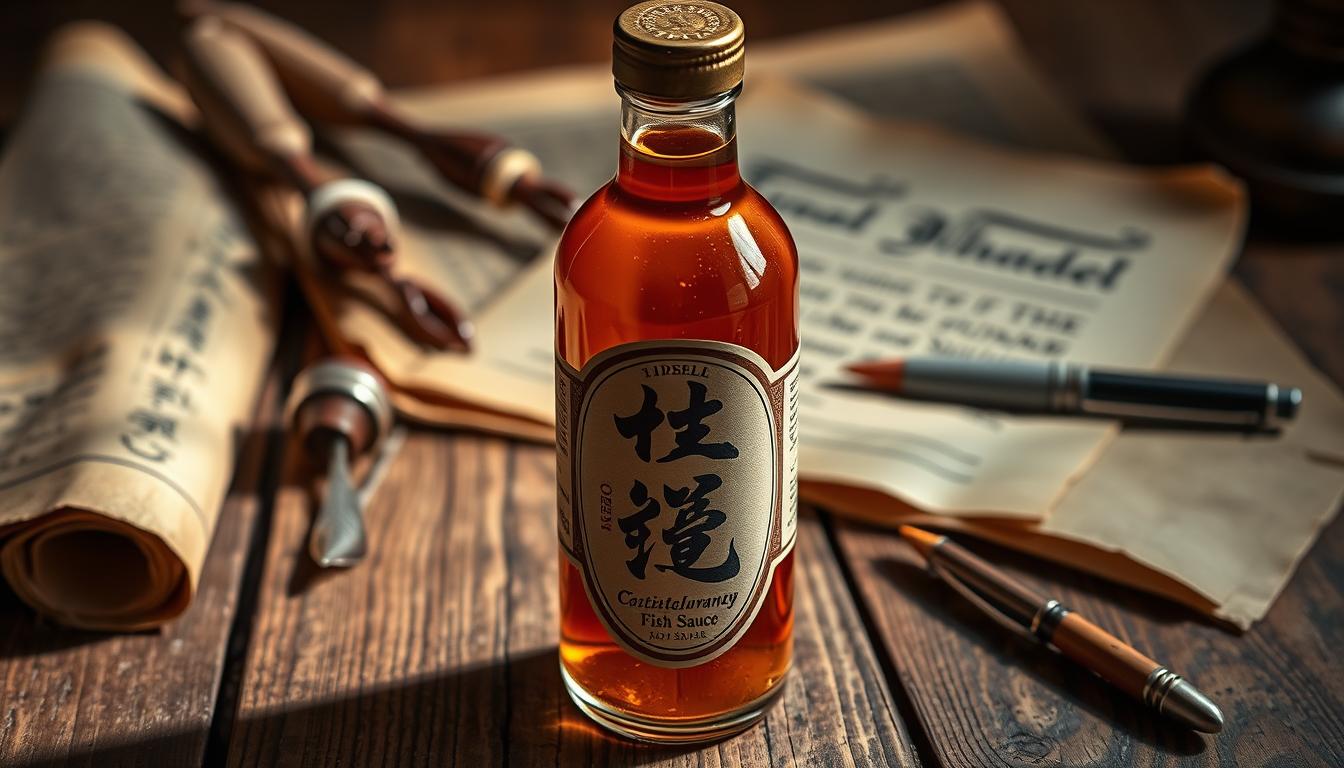Ancient Recipes – Imagine enjoying a meal that’s been loved for thousands of years. Its flavors and cooking methods have been passed down for generations. This is the charm of ancient recipes, still loved today. They show us how food has shaped our culture and tastes.
In the United States, people are digging into their food heritage. Ancient recipes lead this trend. By trying these traditional ways of cooking, we learn about food’s cultural importance. We also get to taste the rich flavors of history and understand the people behind these dishes.

As we travel through time, we’ll uncover the secrets of these classic dishes. We’ll see how they’ve changed over the years. From ancient spices to preserved cooking techniques, we’ll explore the world of historical cuisine. We’ll also hear the stories of these beloved dishes.
Key Takeaways Ancient Recipes
- Ancient recipes continue to inspire and delight us today, with flavors and techniques that have been perfected over thousands of years.
- Traditional cooking methods and historical cuisine are essential to understanding the cultural significance of food and its role in bringing people together.
- Exploring ancient recipes can help us learn about the people and traditions that created them, and appreciate the rich flavors and aromas of historical cuisine.
- Ancient recipes have evolved over the centuries, with spices, ingredients, and techniques being adapted and refined over time.
- By embracing ancient recipes, we can experience the magic of traditional cooking and preserve the cultural heritage of our ancestors.
- Ancient recipes are a testament to the power of food to bring people together and transcend time and culture.
The Enduring Legacy of Ancient Cuisine
Ancient cuisine has made a lasting impact on today’s food world. Its influence is seen in the cultural preservation of old recipes and dishes. Cooking techniques and flavors from different times have merged, creating the diverse food we enjoy today.
From ancient India’s spicy curries to medieval Europe’s stews, these dishes have shaped our culinary history. They show how food has evolved over time, reflecting the traditions and values of our ancestors.
- Hummus, a Middle Eastern dip from chickpeas, tahini, and lemon
- Sushi, a Japanese dish from fermenting fish in rice
- Tacos al pastor, a Mexican dish inspired by Middle Eastern Shawarma
These dishes have stood the test of time, adapting to new ingredients and methods. They show the ever-changing nature of food traditions.
Ancient Recipes Still Used Today: A Journey Through Time
Many timeless recipes have been passed down through generations. They have modern adaptations to suit today’s tastes. Techniques like fermentation, roasting, and stewing still shape our cooking.
From ancient Mesopotamia’s spicy stews to today’s American kitchens, timeless recipes have changed. They’ve added new ingredients and methods. This shows how cooking has been influenced by different cultures.
Some timeless recipes that have lasted include:
- Soups and stews updated for today’s tastes
- Breads and pastries made with ancient cooking techniques like fermentation
- Grilled meats and veggies cooked the old way
The lasting appeal of these dishes proves the value of timeless recipes and ancient cooking techniques. As we delve into the world of food, we see the importance of modern adaptations. They help keep our culinary heritage alive.
The Fascinating History of Sourdough Bread
Sourdough bread has a long history, starting in ancient Egypt. It uses natural yeast and fermentation methods for its unique taste. Over time, ancient baking techniques made sourdough a favorite in many places.
Making sourdough bread takes patience. It needs days for the dough to ferment. This makes the bread not only tasty but also full of nutrients. Important steps include:
- Using a natural starter culture
- Allowing for proper fermentation time
- Controlling temperature and environment
Today, there’s a sourdough revival. Bakers are trying new fermentation methods and ancient baking techniques. This has created many sourdough bread types, each with its own taste and texture. Whether you’re experienced or new, sourdough bread is a must-try. It connects you to the past and offers a delicious, healthy loaf.
Mediterranean Fish Sauce: From Garum to Modern Condiments
The history of Mediterranean fish sauce goes back to ancient Rome. The Romans used garum, a fermented fish sauce made from small fish. It was used to flavor many dishes. Today, fish sauce is key in Mediterranean cuisine.
Now, fish sauce is a staple in many Mediterranean countries. Its production has improved, offering different flavors and textures. Some well-known types include:
- Nam pla, a Thai fish sauce made from fermented anchovies and salt
- Patis, a Filipino fish sauce made from fermented fish and salt
- Garum, the ancient Roman fish sauce made from fermented small fish
Fish sauce is very important in Mediterranean cuisine. It adds depth and umami flavor to many dishes. Its use has also been influenced by Asian and Middle Eastern cooking, leading to diverse flavors and methods.

In conclusion, the history and evolution of fish sauce and ancient condiments have shaped Mediterranean cuisine. Knowing how fish sauce is made helps us appreciate its rich flavors and traditions.
Ancient Asian Culinary Traditions That Survived
Asian cuisine has a long history. Fermentation and preserved vegetables were key in its growth. For centuries, fermentation methods like lacto-fermentation and koji fermentation have made many dishes. Kimchi and sauerkraut, for example, add flavor and nutrition to meals.
These traditions are deeply rooted in culture. Rice wine has been a part of Asian cuisine for ages. It’s used in many cultural ceremonies. Pickling and preserving vegetables also play a big role, with various techniques and ingredients used.
- Kimchi (Korean fermented cabbage)
- Sauerkraut (Chinese fermented cabbage)
- Pickled ginger (Japanese fermented ginger)
- Pickled mustard greens (Indian fermented mustard greens)
These dishes are not just tasty. They also show the rich cultural heritage of Asian cuisine. By learning about fermentation and preserved vegetables, we can appreciate the diversity and complexity of Asian food.
In conclusion, ancient Asian culinary traditions are still alive today. Fermentation and preserved vegetables are crucial in many dishes. Understanding these traditions helps us see the cultural importance of food in Asian cultures and the need to keep traditional cooking alive.
| Dish | Country of Origin | Fermentation Method |
|---|---|---|
| Kimchi | Korea | Lacto-fermentation |
| Sauerkraut | China | Lacto-fermentation |
| Pickled Ginger | Japan | Vinegar fermentation |
Traditional Middle Eastern Recipes That Stand the Test of Time
Traditional Middle Eastern cuisine is a rich tapestry of cultures. It spans thousands of years, influenced by Mesopotamians, Persians, and Arabs. These recipes show the region’s cultural importance and lasting charm.
At the core of Middle Eastern cuisine are recipes passed down through generations. Favorites like kebabs, falafel, and shawarma are not just tasty. They also hold deep cultural value. They bring people together, celebrating community and heritage.
Some beloved traditional Middle Eastern recipes include:
- Kebabs: skewers of marinated meat, typically lamb or chicken, grilled to perfection
- Falafel: crispy, flavorful chickpea patties, often served in a pita with vegetables and tahini sauce
- Shawarma: a popular street food made with thinly sliced meat, served in a pita with vegetables and tahini sauce
The traditional recipes of the Middle East truly showcase the region’s cultural heritage. They reflect the region’s rich history and its power to unite people through food. By exploring and preserving these recipes, we can better understand the region’s cultural significance and its lasting appeal.
The Evolution of Ancient Roman Dishes in Modern Kitchens
Roman cuisine has shaped how we cook today. Many ancient recipes still inspire modern dishes. This shows how tradition and innovation blend in cooking.
At the core of Roman cuisine are simple yet bold flavors. Chefs today use fresh ingredients, herbs, and spices. For instance, the dish coena has evolved into a favorite at dinner parties, with a modern twist.
Some key elements of Roman cuisine in modern dishes include:
- The use of olive oil as a primary cooking fat
- The emphasis on fresh, seasonal ingredients
- The incorporation of herbs and spices to add depth and complexity to dishes
Exploring Roman cuisine’s evolution in modern kitchens deepens our appreciation for cooking. It shows how tradition and innovation can create something special. Whether you’re a chef or a foodie, Roman cuisine offers a rich history and bold flavors.
As we delve into Roman cuisine, we see how ancient recipes meet modern tastes. This mix of old and new flavors highlights Roman cuisine’s lasting appeal. It inspires chefs and food lovers across generations.
Preserving Ancient Cooking Techniques in Today’s World
Exploring ancient cuisine’s rich history is vital. We must preserve ancient cooking techniques today. This ensures traditional methods and cultural heritage stay alive. It lets us value these techniques and their lasting appeal.
For centuries, clay pots and wooden utensils have cooked meals. Today, many prefer these over modern cookware for their unique tastes and textures.

Methods like smoking, pickling, and fermenting are still used today. They preserve food and add special flavors. These methods also help pass down recipes and techniques from one generation to the next. Examples include:
- Smoking meats to create tender, flavorful dishes
- Pickling vegetables to add a tangy, sour taste
- Fermenting foods, like sauerkraut and kimchi, to create healthy, probiotic-rich dishes
Embracing traditional cooking and preservation methods is key. It promotes cultural preservation and keeps ancient practices alive. As we move forward, valuing these techniques is crucial for our culinary heritage.
Some ancient recipes are still used today, while certain foods are banned in some US states.
Conclusion: Honoring Our Culinary Heritage
As we wrap up our exploration of ancient recipes, it’s clear that our culinary heritage is a treasure. These dishes not only taste great but also show us our cultural preservation.
The traditional recipes we’ve looked at have lasted for ages. They show how clever and resourceful our ancestors were. By keeping these traditions alive, we honor the past and make our cooking richer today.
It’s important to keep celebrating and sharing these ancient dishes. They add depth to our food world. From sourdough to Middle Eastern cooking, these recipes connect us to our heritage.
So, let’s celebrate ancient recipes. They nourish us and connect us to our ancestors. They show the power of food to bring us together.
FAQ
What is the significance of ancient recipes in modern cuisine?
Ancient recipes are key to modern food. They have lasted for centuries, keeping our cultural heritage alive. By exploring these recipes, we learn about food’s evolution and its role in our identity.
How have traditional cooking methods influenced modern food trends?
Old cooking ways like fermentation and pickling are back in style. Chefs and home cooks want to connect with the past’s flavors. This trend supports local food and celebrates the art of traditional cooking.
What are some examples of ancient recipes that are still used today?
Recipes like sourdough bread and Mediterranean fish sauce are still loved today. Ancient dishes like garum and Asian fermentation methods are still vital in modern cooking. They show us the lasting appeal of great food.
How can we preserve the cultural significance of ancient recipes in the modern world?
We must honor our culinary heritage by preserving ancient recipes. We can do this by documenting cooking techniques, supporting local food, and teaching about these dishes. By celebrating our culinary past, we keep ancient recipes alive in today’s kitchens.
What role do ancient cooking vessels and preservation methods play in modern cuisine?
Ancient cooking tools and methods are still crucial today. They add unique flavors and textures to our food. Using these traditional tools helps us keep ancient recipes true to their heritage and adds authenticity to our dishes.
Source link
- https://eatshistory.com/the-5-oldest-recipes-in-the-world/
- https://www.seasonedpioneers.com/the-oldest-foods-still-eaten-today/?srsltid=AfmBOoptrLy8J_jzXv4_LLD01igKoZw5NjB_XU4glk_ot4tMHx9gFjCR
- https://en.wikipedia.org/wiki/List_of_ancient_dishes
- https://en.wikipedia.org/wiki/Hochepot
- https://www.realmofhistory.com/2022/08/18/9-oldest-food-recipes-history/
